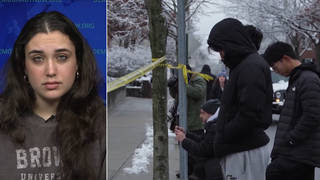
By Amy Goodman & Denis Moynihan
No one disputes that the United States military attacked a hospital in the city of Kunduz, Afghanistan, in the pre-dawn hours of Saturday, Oct. 3. The airstrike on the Doctors Without Borders facility, the Kunduz Trauma Center, was devastating, with at least 30 people killed. Patients in the only intensive-care unit in the region were burned to death in their beds. Medical staffers were killed by shrapnel bombs that tore off their limbs. At least one person was decapitated. As people fled the burning building, the U.S. AC-130 gunship slaughtered them from above with automatic fire. Doctors and other medical staff were shot while running to reach safety in a different part of the compound.
The Kunduz Trauma Center had been in the same place, performing thousands of surgeries and treating tens of thousands of people in the emergency room, for four years. Doctors Without Borders, known internationally by its French name, Medecins Sans Frontieres, or MSF, had repeatedly provided the exact GPS coordinates of the hospital complex to U.S. and Afghan government officials. “As a precondition of opening the hospital, we negotiated with both the U.S., Afghan, NATO, as well as opposition forces, with the Taliban. We received the support of all of those groups to operate this hospital,” Jason Cone, the executive director of Doctors Without Borders USA, told us on the “Democracy Now!” news hour. “Part of that was sharing our GPS coordinates with the various parties. We shared them as recently as September 29th.”
Sept. 29 was an important day in Kunduz. Battles for control of the city had been raging since April. On Sept. 28, a Taliban force reported to be only 500 strong routed 7,000 Afghan National Army troops, capturing Kunduz. This was the first major city that the Taliban had taken since the U.S invasion and occupation began in October 2001, when the Taliban were driven from power. MSF knew that the front line of the conflict had come to their door, and that there would be many more casualties flooding the hospital. “It was probably the most well-lit structure in the entire city of Kunduz, which has about 300,000 people in it, because we were running generators that night,” Cone said.












Media Options